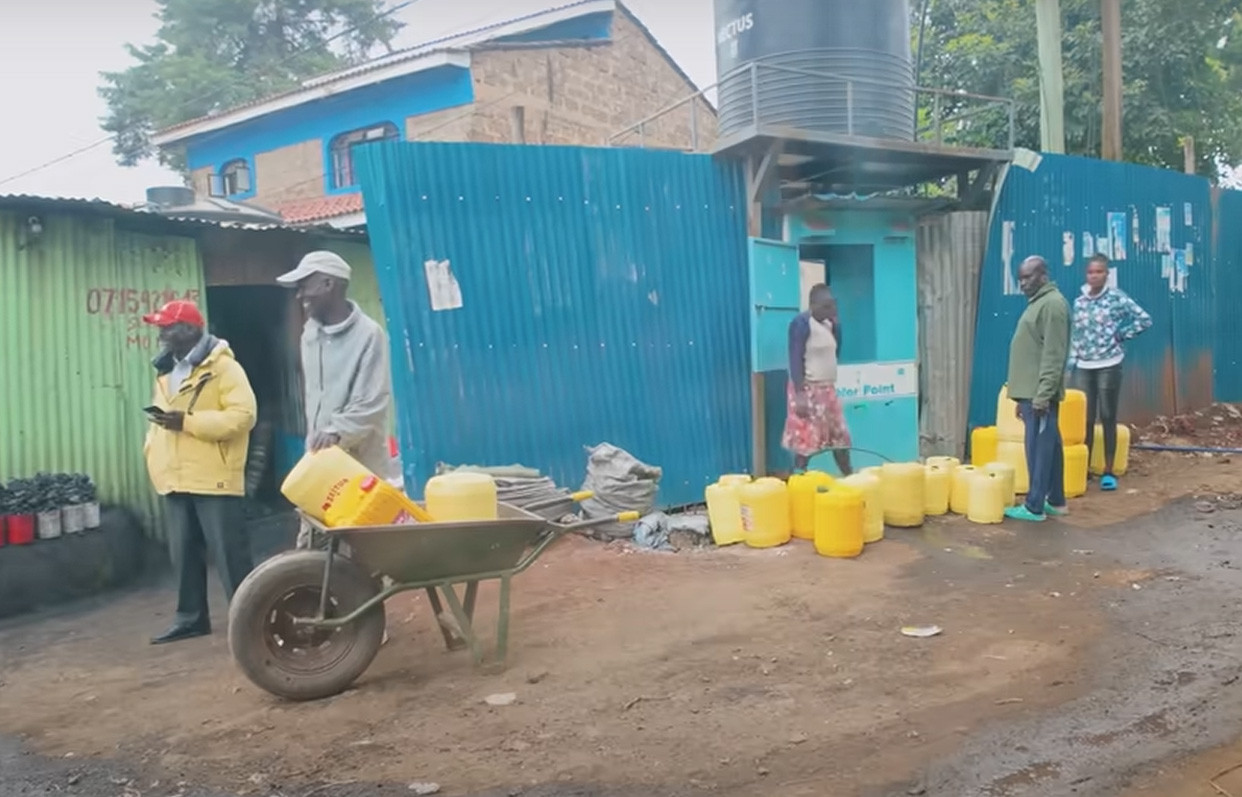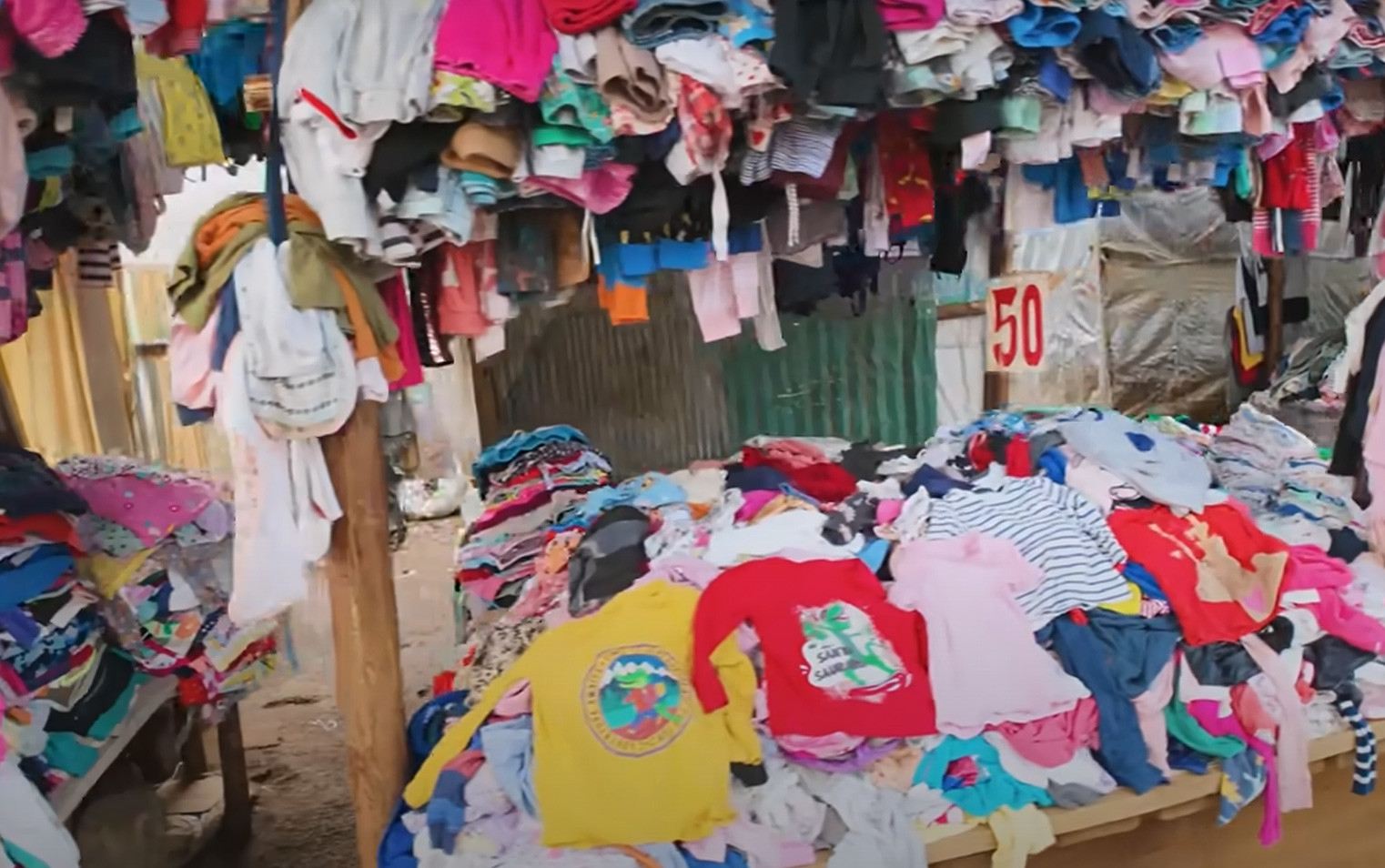YouTuber Khoai Lang Thang Explores Kibera Slum Market
During his trip to Kenya, YouTuber Khoai Lang Thang (Đinh Võ Hoài Phương) visited the market inside Kibera, the third-largest slum in the world.
With a population ranging from 600,000 to 1 million people, Kibera is the second-largest slum in Africa and the third-largest in the world. Located about 5km from the center of the capital, Nairobi, Kibera covers an area of just 2.5 square kilometers, less than 1% of the capital’s area.
Due to the complex political and social situation in this area, Mr. Phuong hired a local man as a guide. At his suggestion, the guide accompanied him to the market to buy ingredients to cook a typical Kenyan meal.


Left: Residents buying water from a public water point. Right: Kibera market selling a variety of second-hand clothes.
The route to the market was intricate and challenging, and the roads were unpaved. The market was quite large and labyrinthine, but the stalls were simple and modest. Most stalls sold only basic vegetables such as cucumbers, tomatoes, shallots, and corn…
What made this market unique was its incredibly low prices. Vendors typically sold produce by the bunch or counted individual pieces, rather than by weight. Avocados were priced at just 1,000-2,000 VND each, tomatoes at 2,000 VND per piece, cabbage at 12,000 VND each, and a bucket of potatoes could be purchased for 50,000 VND…
The YouTuber also discovered an extremely unique product: pebbles. Each stone was sold for 1,000 VND and was meant to be eaten. Locals explained that these stones provided minerals, especially for pregnant women.

The white stones were sold for 1,000 VND each.
In addition to food, the market also had a clothing section with incredibly low prices. Many stalls sold second-hand clothes: shorts for 6,000 VND per pair, jeans for 60,000 VND per pair, and dresses for 100,000 VND each…
All the stalls displayed their prices clearly, creating a sense of trust and eliminating the need for haggling.
Earlier, Mr. Phuong had also visited a supermarket in the area. While the supermarket offered a wider variety of products, the prices were still quite reasonable. However, dragon fruit was priced at 150,000 VND per kg, possibly due to its high price, and it didn’t seem to be a popular item as it sat neglected on the shelves.

When converted to Vietnamese currency, the fruits in the Kenyan supermarket were quite affordable.
Another surprising observation was the large volume of cooking oil sold in the supermarket. Oil was typically sold in containers of 10-20 liters, while 1-2-liter bottles were less popular. Kenyans also seemed to have a preference for bottled soft drinks, which were sold in bottles of a few liters each.
In contrast, the residents of Kibera slum did not have access to a water supply system. They relied on two methods to obtain water: either they carried cans to public water points and paid around 2,000 VND per can, or they opted for home delivery at a cost of 4,000 VND per can.
Upon returning to the guide’s small kitchen, the group began preparing a typical Kenyan meal under the guidance of a local woman.
The menu consisted of four dishes: Chapati bread, bell pepper beef stir-fry, Mukimo, and stir-fried cabbage. All of these dishes are traditional and popular among Kenyans.
Chapati bread is made from wheat flour mixed with grated carrots, sugar, and salt. Warm water is then added to create a sticky dough. The dough is rolled out thin, cut into long strips, rolled up, flattened again, and finally fried on a pan without any additional oil. This is because a significant amount of oil is added during the kneading process.
Mukimo is a popular dish on the streets and in restaurants. It is made by mashing boiled potatoes, adding boiled pumpkin greens and crushed corn, and mixing everything together.
The bell pepper beef stir-fry, with carrots and tomatoes, is prepared similarly to a Vietnamese beef stir-fry but is cooked until very soft.
The last dish was stir-fried cabbage with carrots, served as a side dish.

A delicious and hearty meal.
The YouTuber praised the meal as tasty and suitable for the Vietnamese palate. He also noted that preparing this meal took 2-3 hours and was considered a luxurious feast for Kenyan workers. Usually, the poor in this area would only eat one dish and rarely had fruit for dessert due to the high cost relative to their income.


































